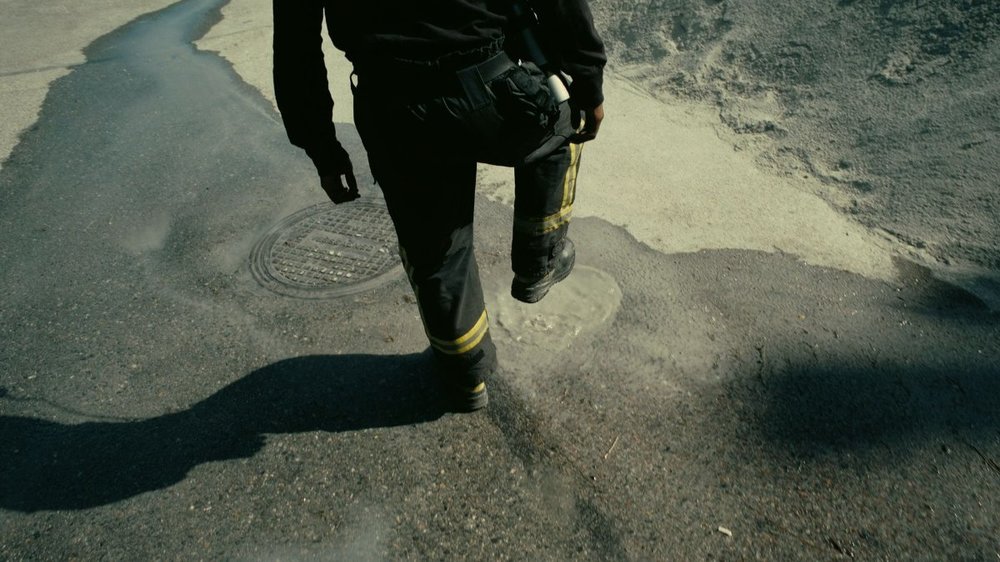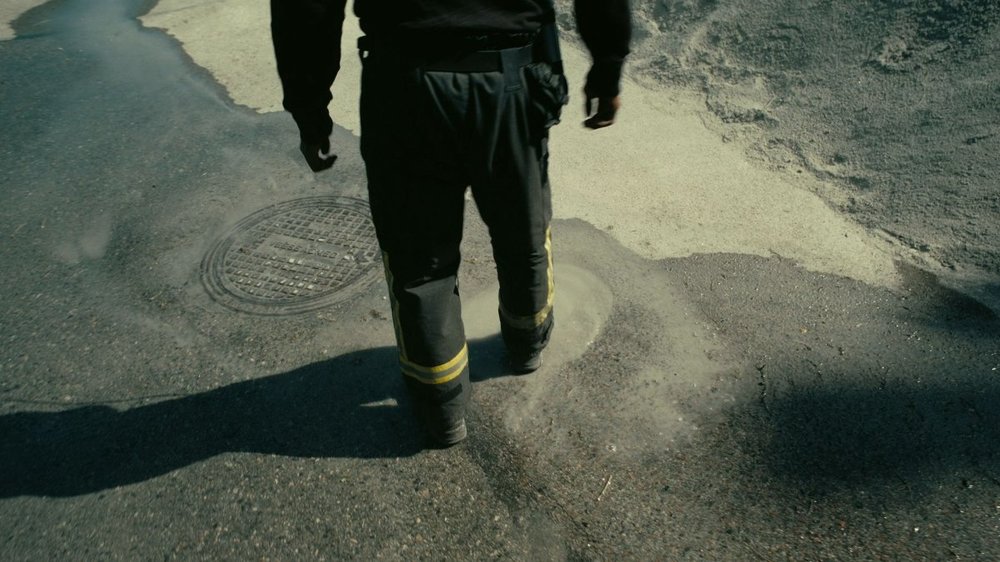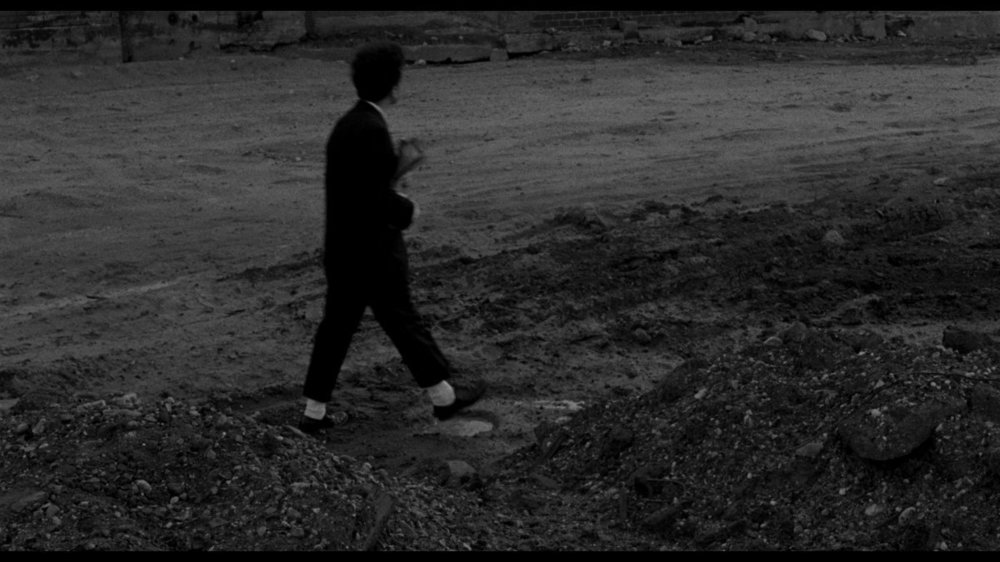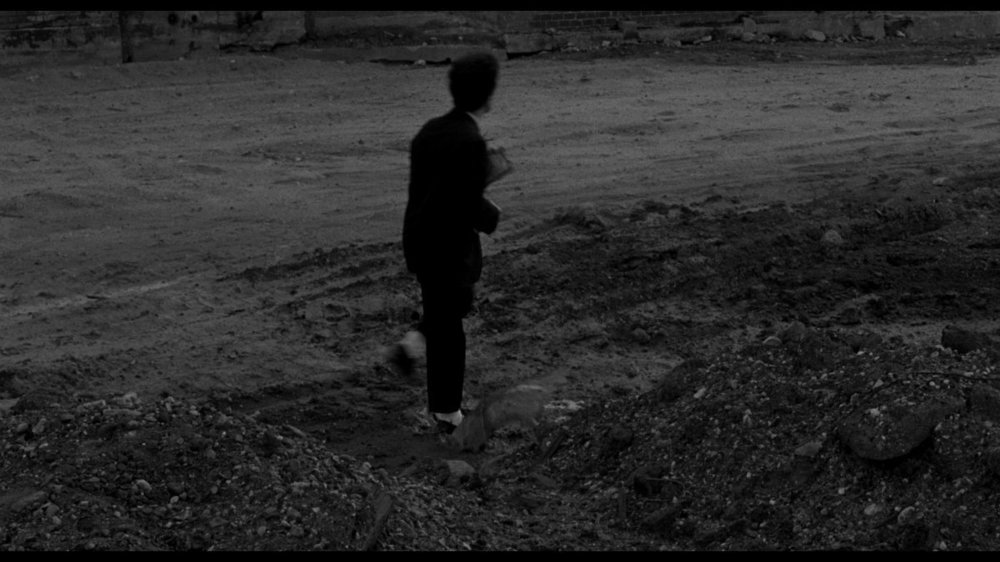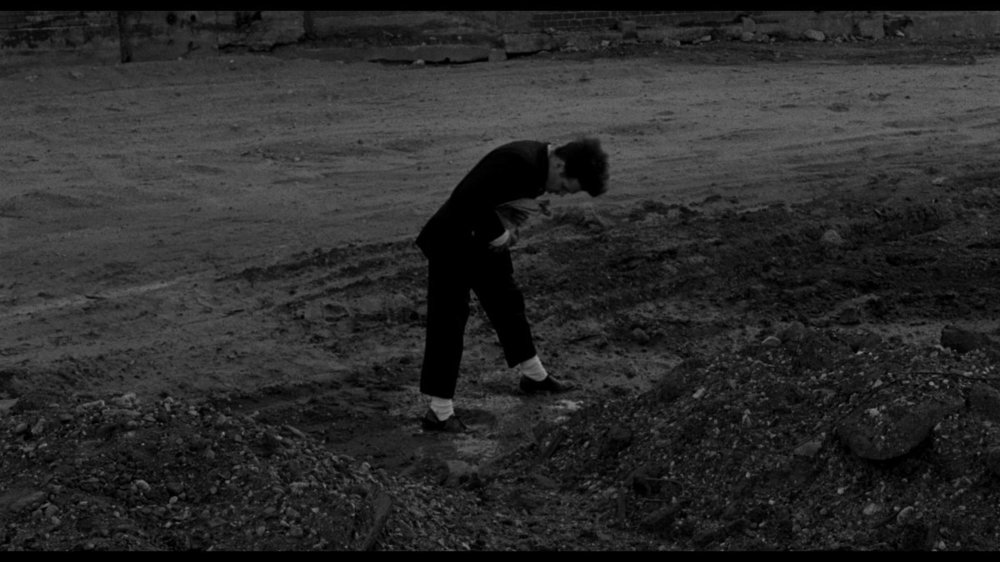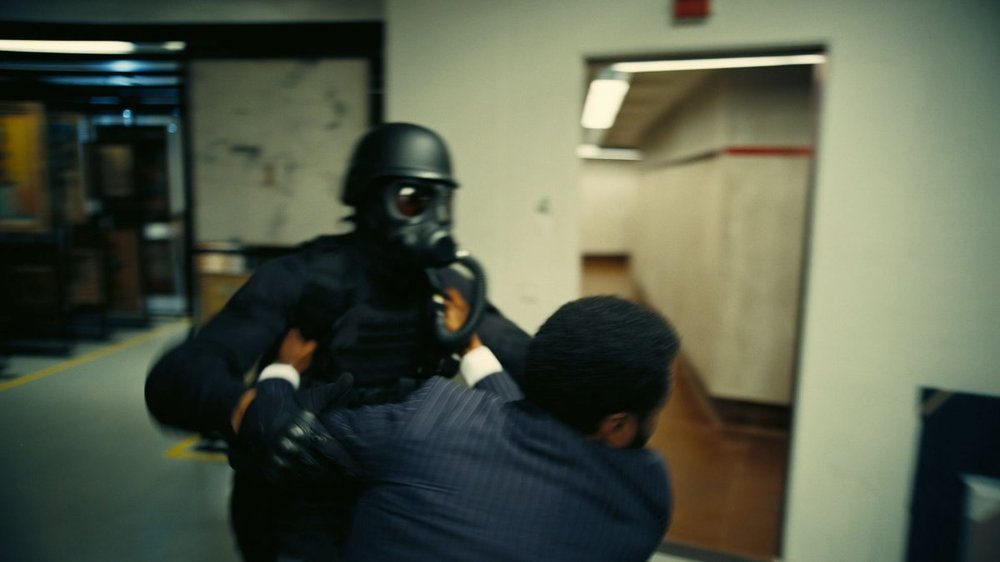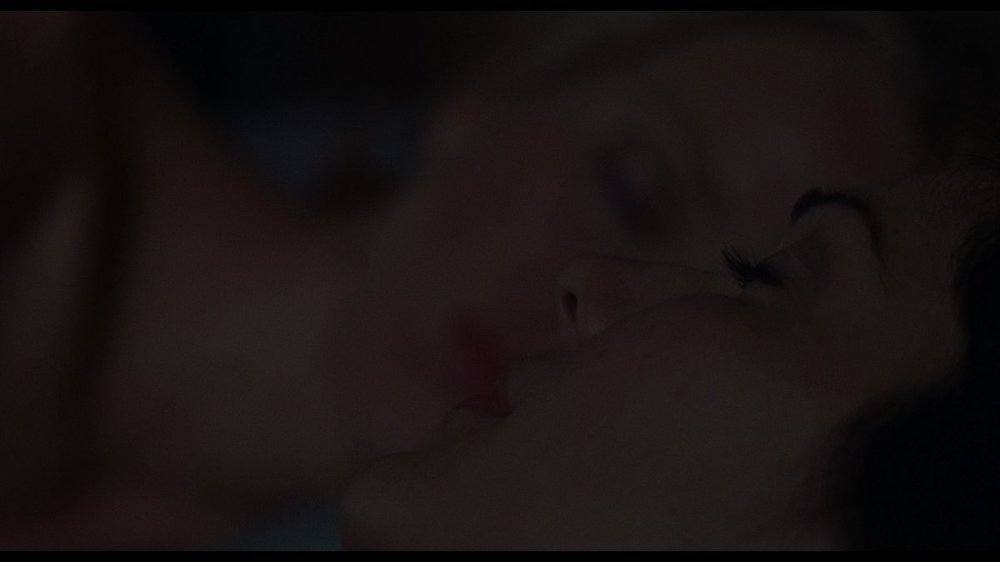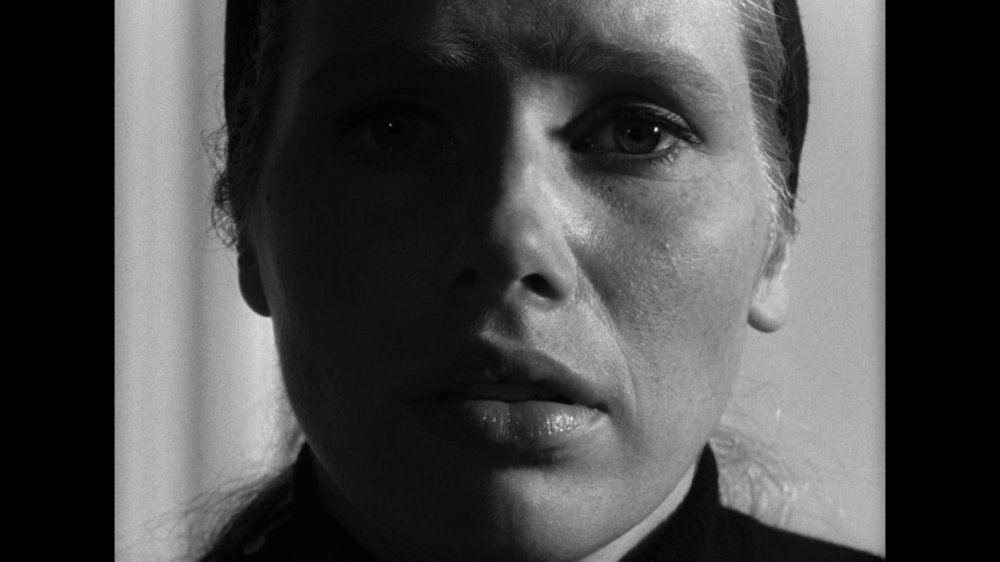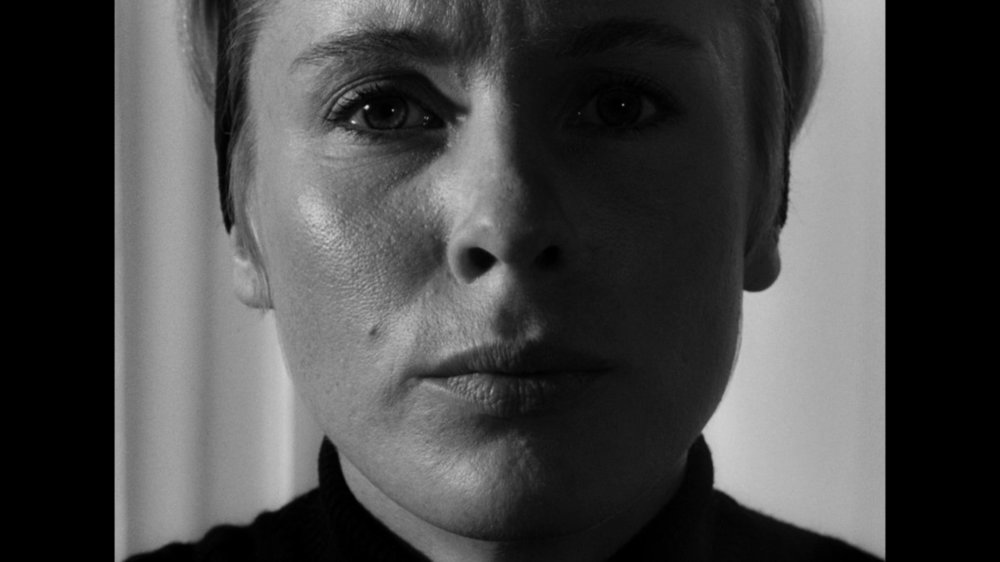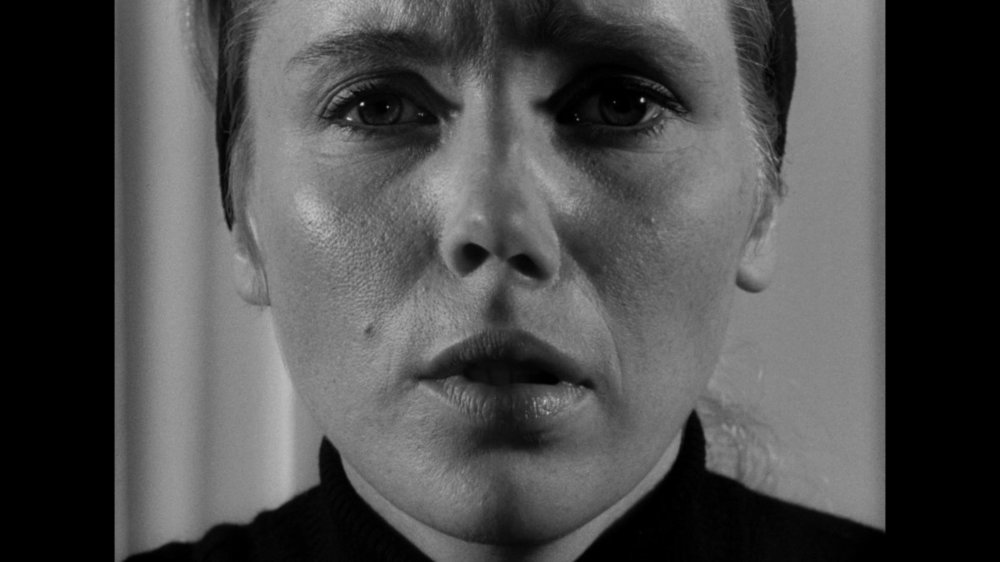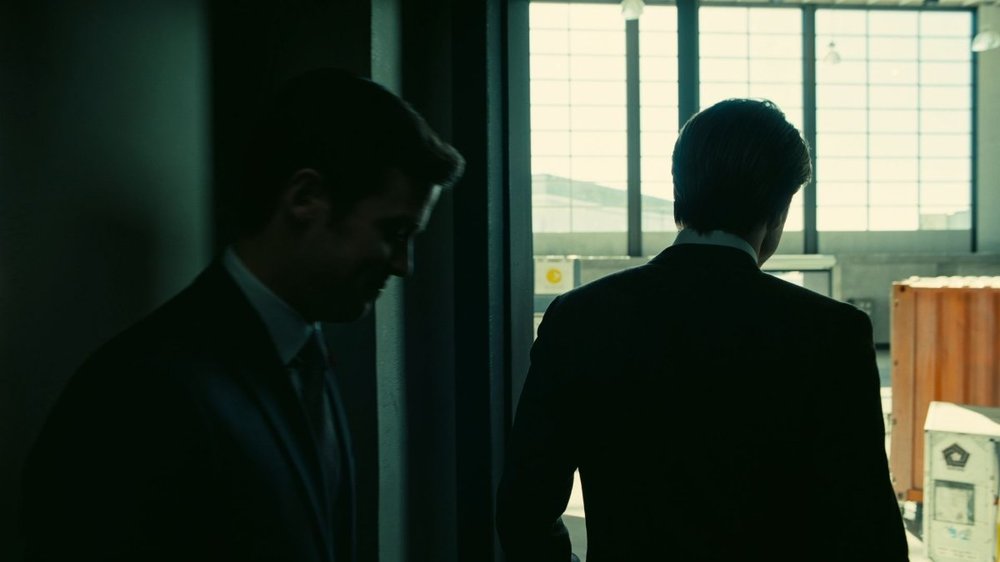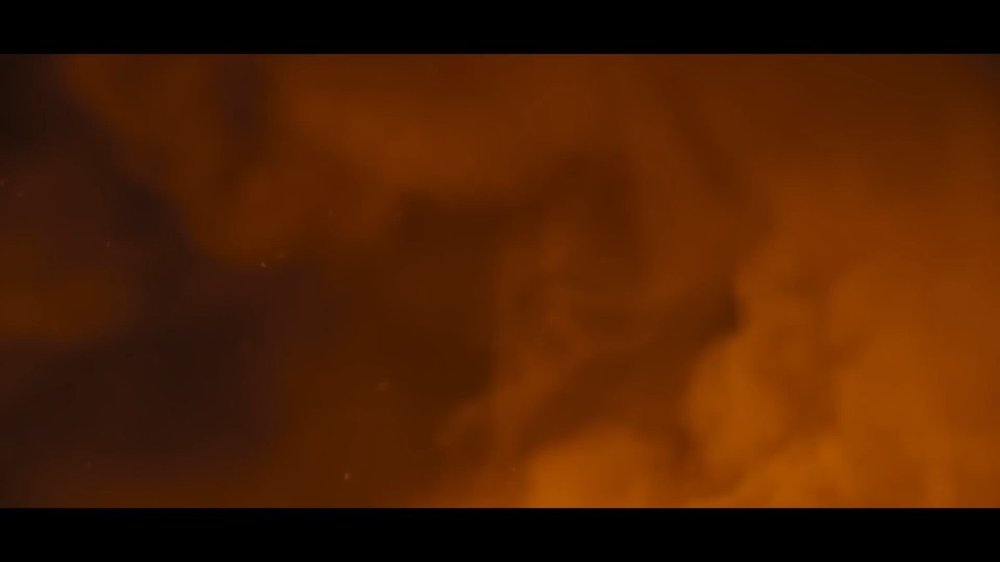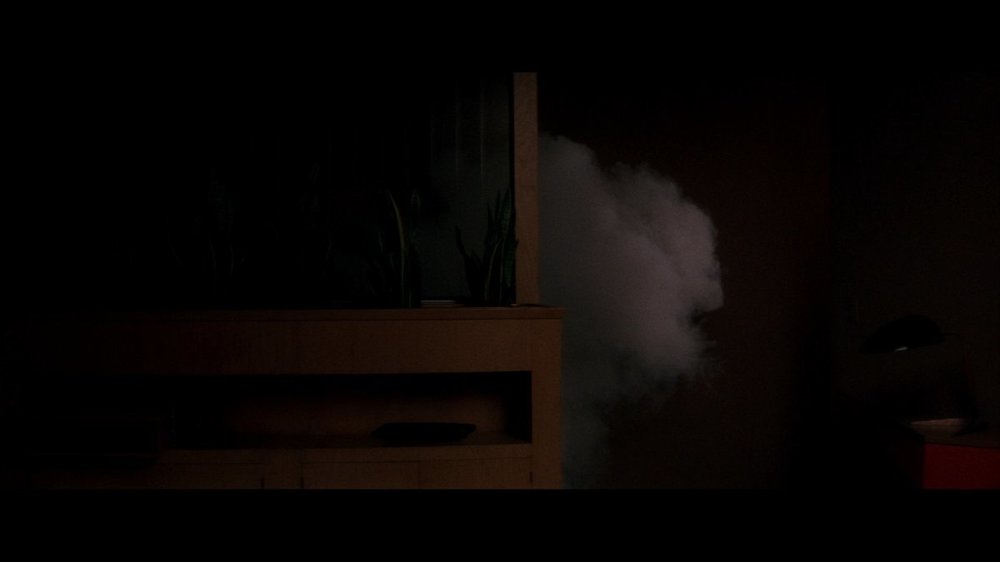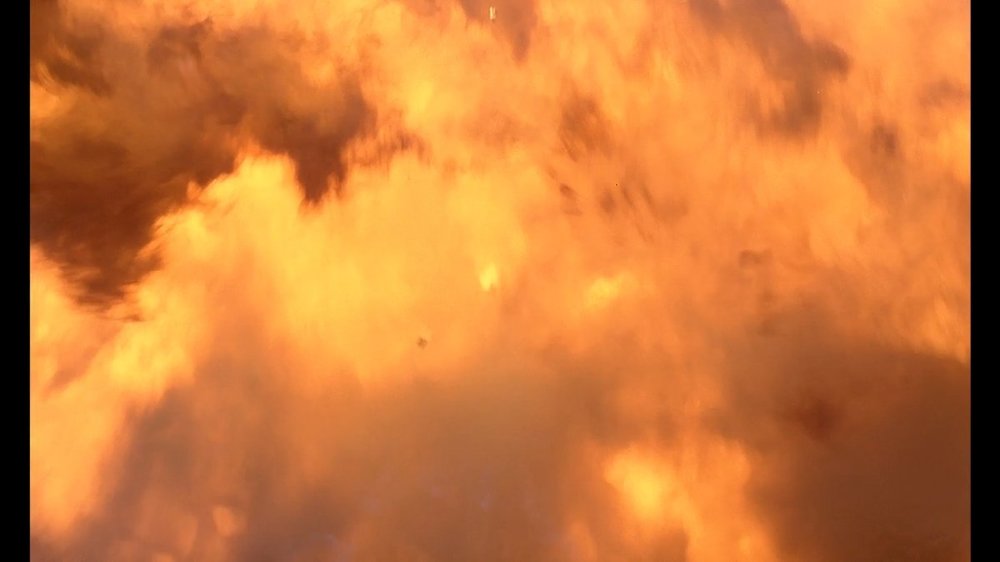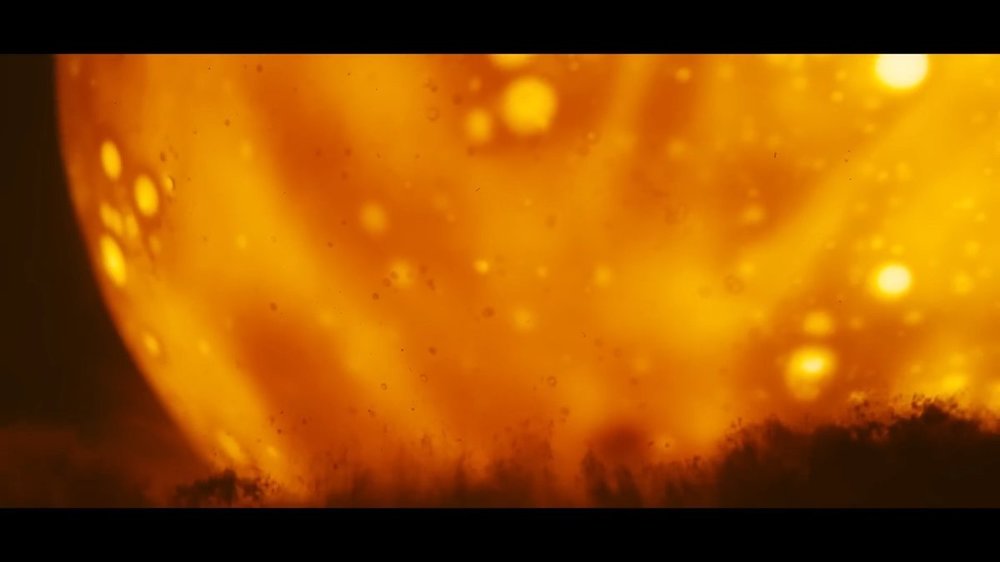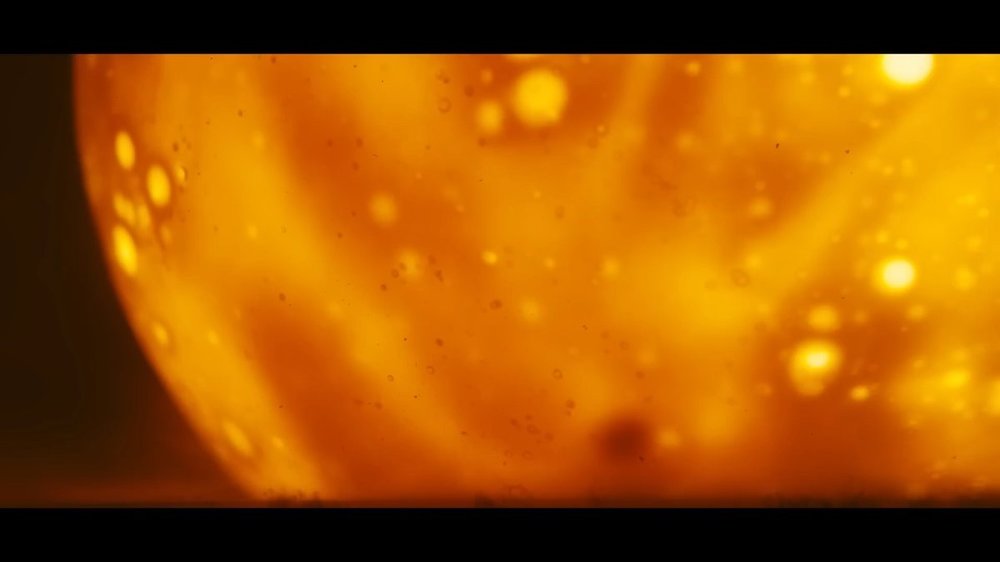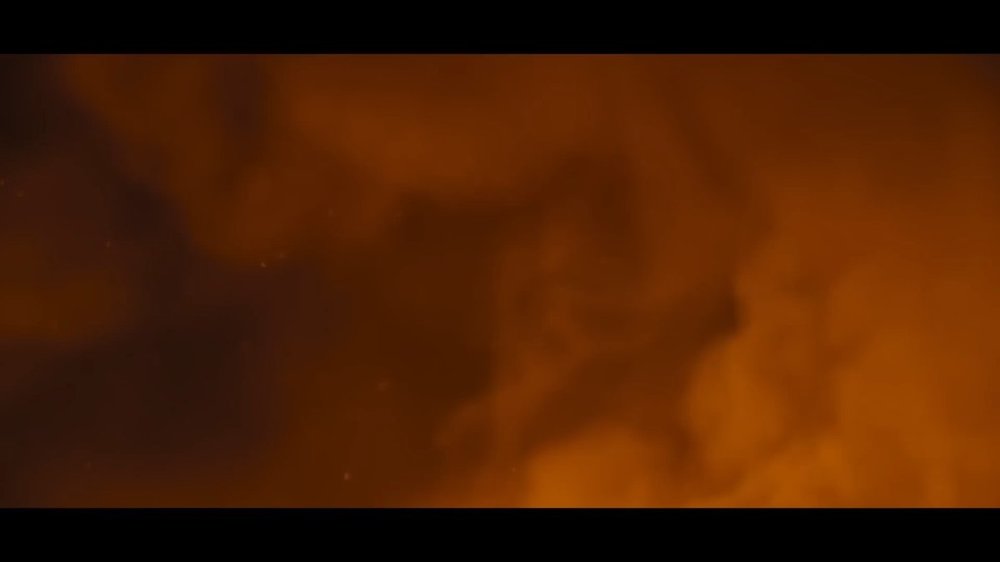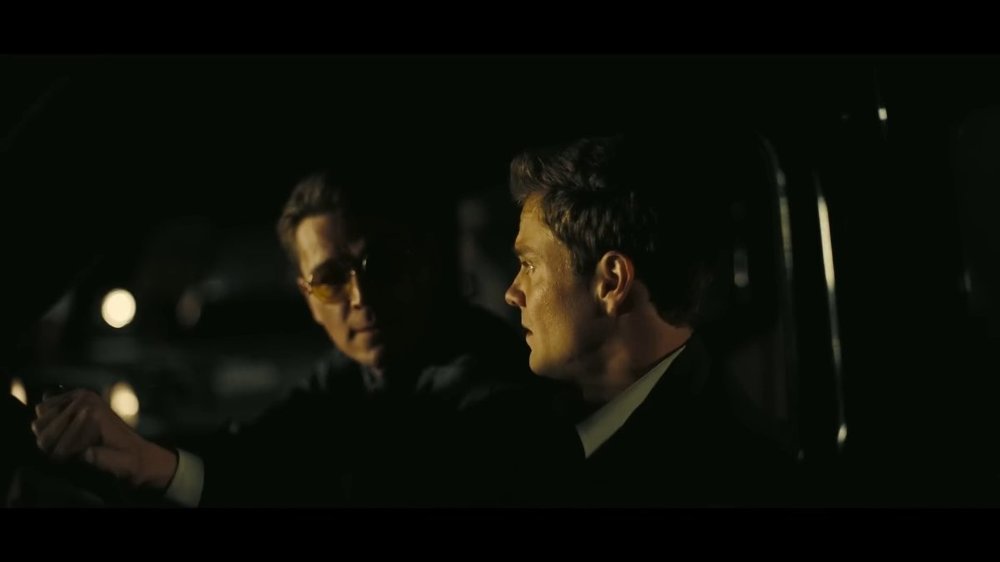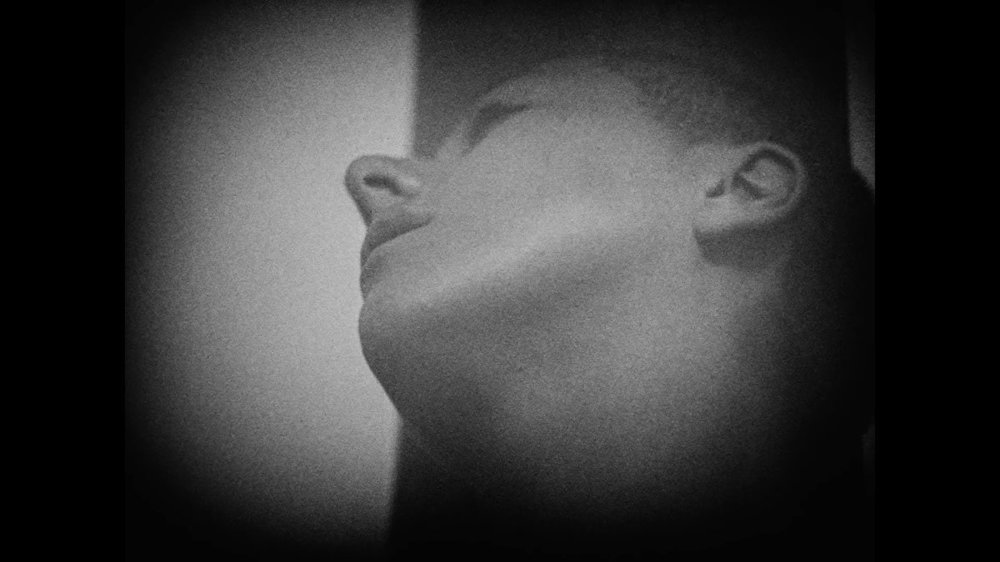
Jeff Bernstein
Premium Member-
Posts
2,961 -
Joined
-
Last visited
Everything posted by Jeff Bernstein
-
μεταμορφώσεις
Jeff Bernstein replied to Jeff Bernstein's topic in Students, New Filmmakers, Film Schools and Programs
Christopher Nolan and David Lynch Puddle in the weirdness : Tenet, 1:31:20–1:31:34 / Eraserhead, 7:35–7:37 Doppelgänger interacting with self : Tenet, 1:42:03 / Mulholland Drive, 1:42:10. And this freakish theme harks back to : Bergman's Persona (1966), 1:10:21 / 1:14:50–1:14:55 -
μεταμορφώσεις
Jeff Bernstein replied to Jeff Bernstein's topic in Students, New Filmmakers, Film Schools and Programs
Oppenheimer trailer Explosive energy of Creation expanding in many directions. Vision of the explosive creative mind behind the eye (the “I”). The futural blue of the “I” (the eye) : we see a person of the future with fire in their head. The character's eye widens at an interior vision : we see the coming of a Revelation. This character's mind explores the Fundamental, where the scale of things is unimaginable, yet the imagination seeks after measurement anyway. While the orange fire moved in many directions, it didn’t move away from the lens at the fast rate of speed of the particles in blue : another contrast (along with the colours) between fire and particles : the different directions. Moving forward : entering ever further into the birth of the narrative. The delicacy of the raindrops and the leaf recall the sweet times of life; yet this delicacy is founded on cold slate. Contrast. The transparent water delineates a depth. We don’t actually know the dimensions of the slate, do we? (It might be human scale, sure; or, for the sake of argument, it might not.) Which means that the depth of the rainwater is, theoretically, immeasurable. The green of the leaf is the colour of our human nature inside us : our memories; our individuality. Cyclical disruptions are taking place and multiplying : anything could be happening (so to speak). This image recalls the dream-imagery of Vertigo and the Stargate of 2001 : even though the imagery seems a capture of "real life", by virtue of being in the frame, each element is invested with symbolic resonance, and Nolan could be showing us Infinity, or anything in it. At the very least, this image of rainfall is peaceful. Ah, the oasis of the Earth! Amid the fierce forces of the multiverse, the delicate peace of hushed rainfall of our world. (So why would humans bring the Fire of the Gods, so to speak, to this peaceful place? A component of this question is the compulsion of the Visionary who Questions.) The droplets dappling the panes of glass recall the fundamental particles that embody all the forms we see. Rainwater trickles down the glass as well. Particles and waves. And the stained glass : the human. And the handle : reach out, seeker, and find a way out of the darkness to . . . who knows where : we see only blurs on the other side. Blurs, then we cut to the stacked straight lines by Oppenheimer's face—what abrupt contrast of the misty with the sharp! Squiggly rain, straight lines. A strata of lines radiating out (so to speak) from the sharp eye with the explosive mind behind it. The head, full of thought, seeming to swell outward with the force of its Visions. The Creative Force is mutating this person into something Other. The straight lines are visual emblems of his ordered thoughts; of his ordered progress; of the elegant thinking; of a neat mind. But look again : the lines lead into blackness, and the face is half in shadow. The Thinking "I" is caught in darkness. The Thinking "I" is a fiery orange blast in the dark. Though the inner orange blast looks blue, when you see it transmuted through the expression of the outer eye. The eye, the "I" = the sky. Man as reaching for the secrets of God. Man as taking over the role of God. Rising. Out of the mist and up toward the light. The light : is this the light of Heaven, or the light of the atomic ambience? Prometheus brought down fire to the Earth, then was himself brought up high in horrible punishment. Now we see the simulacrum of a small town : all that Heaven allows. The good life : small-town life. This small town is apparently about to be obliterated for the sake of science curiosity and national security. Humankind now has a power that surpasses those powerful mountains that rose high over eons of time. Humankind now has power more powerful than the Earth. When just a few hundred years earlier, no one could even draw a proper map of the continents, now humankind has the life of the entire planet in its firm grip. But is knowledge and capability exclusively a positive? Oppenheimer, standing in earth-brown before bare brown trees the same colour of his suit, looks troubled by the Situation. He is associated with the earth, but the earth in the shot is mostly barren. His face radiates light : the crease between his eyes connotes serious Thinking behind those eyes. What does “success” mean to this character? “Success” means the creation of an operating tool of annihilation. Success = annihilation? This character has entered a labyrinth of thought worthy of Sophocles. The bomb explodes Certainty well before it detonates. Humankind playing with fire. Humankind playing with the building-blocks of nature. You pick at a frayed thread, soon enough the entire garment might unravel. Who knows what chain reaction might take place at the point of the splitting of the atom? Humankind often gambles to gain more knowledge. The stars of the sky are controlled nuclear explosions that each last billions of years. Oppenheimer has brought the power of the stars down to ground-level. The character of Oppenheimer is a metaphor for the Artist. Yet Oppenheimer’s art is the Art of the Threat. This contradiction—the beautiful creation of a destructive tool—haunts Oppenheimer : he turns away from his machine. How is he going to resolve the opposites in his mind? Oppenheimer : an epic of the mind. -
μεταμορφώσεις
Jeff Bernstein replied to Jeff Bernstein's topic in Students, New Filmmakers, Film Schools and Programs
Oppenheimer : film and trailer. A provisional study (so far) of the trailer of Oppenheimer has revealed various items that will prepare us for the film. Example 1 : the anthropomorphic vibe applied to the tower (body) and bomb (face; brain). Example 2 : a thematic colour scheme (e.g., red/blue). Perhaps a close study of the trailer is precisely what the storyteller wants us, the audience, to do. Studying the trailer gives the audience a key advantage : If we know even before frame one of particular motifs and other techniques of the film, then we will be prepared for them when they first appear, and in this way we will absorb the mysteries of the film faster than we would otherwise. We will actively participate in the meaning-production from frame one. We will not have to make adjustments as the film progresses, because we are already in sync with the storytelling. The trailer is the window. We peer through the window and gather detail. When we sit before the movie, we move through the window. And the trailer remains with us, as a map assisting our progress. The more we absorb the secrets of its trailer, the more powerful our intake of Oppenheimer from frame one. Theory : Christoper Nolan would rather we do this. -
μεταμορφώσεις
Jeff Bernstein replied to Jeff Bernstein's topic in Students, New Filmmakers, Film Schools and Programs
Parallax : Story of Tithonus and the Dawn So the golden-throned Dawn took Tithonus away, a mortal : and she went to ask for him to live eternally, as a god : and so Zeus smiled upon her, and with a nod fulfilled her desire. But the queenly Eos was innocent in mind and failed to think to ask of Zeus to scour off all sign of deadly age. So Tithonus was held and greatly loved while in the energy of youth, and early-born Eos pleasured greatly in him, living by the waters at the end of the earth : but when his hair came down grey on his shapely head, Eos kept away from his bed, though continued to delight in him, and brought him bread and ambrosia and beautiful garments. Then when hateful old age weighed wholly upon him, so that he lacked all strength to move his legs or lift his arms, she decided to do the following : she lay him in a room, then shut the shining doors on him. There, he speaks out eternally, as a god, but lacks all the strength that once animated his vigorous body. Homeric Hymn to Aphrodite, ll. 218–238. -
μεταμορφώσεις
Jeff Bernstein replied to Jeff Bernstein's topic in Students, New Filmmakers, Film Schools and Programs
-
μεταμορφώσεις
Jeff Bernstein replied to Jeff Bernstein's topic in Students, New Filmmakers, Film Schools and Programs
“We think it’s a type of inverse radiation triggered by nuclear fission.” 1. “inverse radiation” “Inverse”, as in proceeding in a reversed order? Energy not radiating outward like light, but as if sunrays were moving into the sun, as into a black hole? “inverse radiation” = a pulling-toward? 2. “nuclear fission” “It is energetically favourable for extremely heavy atomic nuclei to split into two or more lighter fragments and yet extremely few nuclei do spontaneously fission. On the other hand , there are a number of ways in which nuclei can be induced to fission.” —J. M. Irvine, “Nuclear fission”, Science Progress (Winter 1975), 501–522. 1 + 2 = Nuclear hijinks conjure strange phenomena. 3. inversus (Latin) : “inverted, upset, turned upside down”. 1653 H. Binning Sinners Sanctuary (1670) xxi. 167 It’s a direct motion towards Christ, it’s an inverse and backward motion towards our selves. 1715 in W. Whiston Astron. Lect. viii. 97 [The waning moon] puts on the same Shapes again, but in an inverse Order. 1765 J. Elphinston Princ. Eng. Lang. Digested II. viii. 198 The solemn, as the inverse to the familiar stile. 2010 S. N. Ethier Doctrine of Chances xx. 623 Four even-money bets are available, called red, black, color, and inverse. -
μεταμορφώσεις
Jeff Bernstein replied to Jeff Bernstein's topic in Students, New Filmmakers, Film Schools and Programs
After the end of World War II, the United States and the Soviet Union squared off for world supremacy in the post-war world order. Formerly allies, now they were sworn adversaries. The battle lines were black and white : Capitalism vs. Communism. Democracy vs. Totalitarianism. Free Thinking vs. Coercion. West vs. East. The prize? Ruling the globe without equal. As America’s atomic destruction of Hiroshima (August 6, 1945) and Nagasaki (August 9, 1945) proved, the possibility of complete annihilation was no fairy tale. In 1945, President Harry S. Truman, before the U.S. Congress : “Our geographic security [is] forever gone—gone with the advent of the atomic bomb, the rocket, and modern airborne armies.” In 1947, Henry L. Stimson, previously Secretary of War under Presidents Roosevelt and Truman : “Now, with the release of atomic energy, man’s ability to destroy himself is very nearly complete.” In 1953, President Dwight D. Eisenhower, before the United Nations : “Two atomic colossi are doomed malevolently to eye each other indefinitely across a trembling world.”[1] By 1949, America had already stockpiled 200 A-bombs.[2] This simmering antagonism was known as the Cold War.[3] In the April 1947 issue of Foreign Affairs, an author named “X” counselled the American government in “The Sources of Soviet Conduct”, urging that American foreign policy must be first and foremost militaristic : “The issue of Soviet-American relations is in essence a test of the over-all worth of the United States as a nation among nations. To avoid destruction the United States need only measure up to its own best traditions and prove itself worthy of preservation as a great nation.”[7] In April 1950 President Truman retreated from his former reductionist military policy and signed NSC-68, requesting from Congress $50 billion in emergency funds for rearmament.[8] [1] on September 6, 1945; in Harper’s Magazine, February 1947; on December 8, 1953; see Henriksen, Dr. Strangelove’s America, 16, 47, 44. [2] Halberstam, Fifties, p. 37. [3] “The term “Cold War” seems to have originated with Walter Lippmann [a political journalist], who used it first in a column and later in a book of that title, in 1947.” Copeland, Miles, The Real Spy World (London: Weidenfeld and Nicolson, 1974), 200. [7] “The Sources of Soviet Conduct” by X (actually George Kennan), Foreign Affairs, April 1947, 575; 582. ¶ At the time, Kennan was Chief of the Policy Planning Staff in the State Department. [8] O’Neill, American High, 56; Halberstam, Fifties, 67. -
μεταμορφώσεις
Jeff Bernstein replied to Jeff Bernstein's topic in Students, New Filmmakers, Film Schools and Programs
“We live in a twilight world, and there are no friends at dusk.” phrase found inside : “Interdigital love.” -
μεταμορφώσεις
Jeff Bernstein replied to Jeff Bernstein's topic in Students, New Filmmakers, Film Schools and Programs
“We live in a twilight world, and there are no friends at dusk.” “We live in a twilight world, and there are no friends at dusk.” vein two dand rear sat -
μεταμορφώσεις
Jeff Bernstein replied to Jeff Bernstein's topic in Students, New Filmmakers, Film Schools and Programs
“We live in a twilight world, and there are no friends at dusk.” Ew evil ni a thgiliwt dlrow dna ereht era on sdneirf ta ksud : evil era -
μεταμορφώσεις
Jeff Bernstein replied to Jeff Bernstein's topic in Students, New Filmmakers, Film Schools and Programs
Weliveinatwilightworldandtherearenofriendsatdusk Inside this letter-stream are the words : Neurointerventionalists Transindividualities Antiauthoritarians Antitraditionalists Antitotalitarian Deinstitutionalise Detraditionalisation Retransfigurations Transgenderisation Transnationalities Highest Resolution Industrial Strength Theatre in the round Neurogenerative Levelheadedness -
μεταμορφώσεις
Jeff Bernstein replied to Jeff Bernstein's topic in Students, New Filmmakers, Film Schools and Programs
“We live in a twilight world, and there are no friends at dusk.” 1. The line is composed of forty-eight letters. In how many ways may secret meanings be embedded in these forty-eight letters? What follows are some suggestions. 2. The sentence is built of two parts (two clauses) divided by a comma. In the first clause, the letter “l” appears three times; in the second clause, there is no sound of the “l”. The disappearance of the letter “l” contributes to the overall sonic effect of the line. After the relaxed “l”, the fricative “f” is very strong, and its strength is echoed in the plosive “k”. A number of different consonantal sound groups are employed here : for example : the lateral (l), the fricative (f), the plosive (k). Perhaps the meaning of the message lies in the use of phonetics : the perception of sound? 3. The line ends powerfully, resolutely, conclusively, with the “k”. If the secret message consists not in the semantic content of the line, but exclusively the sound content, perhaps the secret lies in the use of this one letter (its only use in the line)? 4. What if the message consists of the alphabetic letters that are not present? 5. 18 letters of the alphabet are used to create this line. w : 3 e : 6 l : 3 i : 5 v : 1 n : 4 a : 4 t : 4 g : 1 h : 2 o : 2 r : 4 d : 4 f : 1 s : 2 u : 1 k : 1 6. What if the message corresponds to the prevalence of letters? So that, say, the message corresponds to something with regard to the frequency of the “e” and the “i”? 7. What if the message corresponds to the number of letters in each word? So that the message is “2 4 2 1 8 5 3 5 3 2 7 2 4”? 8. Perhaps the message is, simply enough, the number “48”? 9. What about the letters used only once? v / g / f / k /u . . . . 10. What about the spacing? We_live_in_a_twilight_world_and_there_are_no_friends_at_dusk. Twelve spaces : is “twelve” the message? -
μεταμορφώσεις
Jeff Bernstein replied to Jeff Bernstein's topic in Students, New Filmmakers, Film Schools and Programs
for fun : Seneca’s Batman Reboot A boy witnesses the death of his parents. He spends the rest of his maturation brooding over the nature of things, and decides on revenge. It is obvious that he is not in his right mind. A Howard Hughes figure, the boy chooses not to spend his money on airplanes or movies, but arcane contraptions, attack vehicles, marvellous weapons, and exoskeletons and other types of body armour. He even wears a cape, which, no matter the utility, has about it a sense of the antique and the theatrical. Insanity is playing a character, but this character is not wearing “the mask of sanity”, but an even greater insanity—this role is a “superhero” in a cowl who haunts the streets and foils with force and cunning all the criminals of the city. What makes his insanity so dangerous is the boy’s genius. Who knows what he can get up to? A cowl : the boy's face is hidden. Sure, he’s masking his identity for purposes of self-preservation : but what if it’s also from self-loathing? Wearing all the trappings of the superhero, the boy gets to stop being himself. He escapes into a fantasy world which just happens to have a utility about it (he “cleans up crime”). Guilt. The boy couldn’t save his parents. Because of this he is caught in a repetition compulsion. He foils criminal after criminal as a proxy for the criminals he couldn’t stop. Perhaps it is some magic circle : by the end, the boy reaches whoever it was who eliminated his parents. After that meeting, would “the Batman” come to an end? Would he be released from his compulsion? Would he find his cure? Seneca’s Batman is no action figure for kids. A complete wacko (and who wouldn’t be, doing what he’s doing?), he takes the most sadistic glee in his punishments—which, yes, are aimed at himself. The Batman body armour is a visual representation of the impenetrable jacket of guilt around him. Somewhere within all that technology and force is a vulnerable human heart beating. And his enemy knows it? -
μεταμορφώσεις
Jeff Bernstein replied to Jeff Bernstein's topic in Students, New Filmmakers, Film Schools and Programs
“We live in a twilight world, and there are no friends at dusk.” My thoughts are multiform and unresolved, and no answers are forthcoming. There are no answers (“friends”) at the end (“dusk”); we remain within the echo of unresolved questions joining as a “twilight” of the unanswerable. In a twilight world, all answers not slotted into “technical writing” are provisional and simplistic, answers for the moment only, to get us through, one way or another, the labyrinth of twilight and dusk. I do not know who I am, and will end up as mystified as I began. In a twilight world, there are no happy endings. Next stop, the Twilight Zone. “We live in a twilight world, and there are no friends at dusk.” -
μεταμορφώσεις
Jeff Bernstein replied to Jeff Bernstein's topic in Students, New Filmmakers, Film Schools and Programs
Oppenheimer : reflections from Heidegger, “The Question Concerning Technology” Heidegger : Technology is a contrivance, or, in Latin, an instrumentum. Your humble author : Technology, regardless of scale, is a tool, like a hammer or a nail-clipper. But we mistake it for something more; this mistake is incorporated into our view of the world as “progressive”, “futural”, and suchlike, when in fact we’re in a New Dark Ages and humankind has progressed practically nil since 10,000BC—it only looks like we have. Heidegger : Modern technology is a means to an end. Just as a hammer is used to hammer a nail. Heidegger : Suppose that technology were no mere means [no mere “tool”]—how would it stand with the will to master it? We mistake technology for “human mind advancement”; this mistake blinds us to the imbecility of what we do with our technology. And is it too late now? Are we forever in thrall to the tools we have built? We make better hammers and think ourselves Progressive Geniuses? In fact, are we Inhuman? Our better hammers are hammering us into oblivion? Is this the danger of Technology : Is it Beyond Human? But the Visionary, too, is Beyond Human. It's not so much that the technology is horrid, it's our understanding of it and how we use it? Is the Atom Bomb, a tool to eliminate every human on earth, the most Inhuman invention ever created? And yet it came from good-intentioned Creative Genius? We certainly live in a twilight world. ? : Oppenheimer is pure mind, and the application of his Visions is not his responsibility. ? : Oppenheimer is pure mind, but still takes responsibility for the application of his Visions. ? : Oppenheimer doesn't know what to think, because we live in a twilight world. Heidegger : The essence of technology lies in Enframing. Our understanding of technology conditions our entire world view. Not seeing technology as mere tools, as “better hammers”, but as something related to the advancement of humanity, is a Big Mistake. Heidegger : Enframing blocks the shining-forth and holding-sway of truth. Misunderstanding what technology is, and what our true relationship to it should be, leads humanity into the delusion of “progress”. Is the Atom Bomb progress? Is sleeping with your mobile phone progress? Or are you immersed in a Twilight World? But there is good news! Hölderlin: But where danger is, grows The saving power also. -
μεταμορφώσεις
Jeff Bernstein replied to Jeff Bernstein's topic in Students, New Filmmakers, Film Schools and Programs
“We live in a twilight world, and there are no friends at dusk.” One way into this line (from Tenet (2020)) is to begin with the words “twilight” and “dusk”. “Twilight”, etymologically, according to the OED, is simple : it derives from the German for “twilight”. The OED reminds us that “twilight” refers, generally speaking, first and foremost, to 1. “The light diffused by the reflection of the sun’s rays from the atmosphere before sunrise, and after sunset; the period during which this prevails between daylight and darkness.” Twilight : A lighting transitional stage. Is it light, or is it dark? This ambiguous lighting condition was a favorite of Seneca’s (whose vibe has come to us via Macbeth). ipse quin aether gravis, inter diem, noctemque, desertus stupet. (Thyestes, 990–1) Iam nocte Titan dubius expulsa redit et nube maestus squalida exoritur iubar . . . (Oedipus, 1–2) nec caelum patet undante fumo: nube ceu densa obsitus ater favilla squalet Iliaca dies. (Trojan Women, 19–21) “obscura nutat silva” (Thyestes, 655) which recalls, in its rhythm, “noctis aeternae chaos” (Medea, 9) These vibes are recalled in Macbeth : “Light thickens, and the Crow makes Wing toth’ Rookie Wood.” “Dusk”, according to the OED : A2. “partially dark, as in the evening when the last light of the day has almost faded but it is not yet fully dark, or in the morning when the first light of day appears.” Hmm. In the most general senses of these two words, then, at least according to the OED, “twilight” and “dusk” are synonyms. So some doubling is taking place. What is the OED’s A1 “dusk”? “Relatively dark in colour or shade; darkish, blackish.” So the first—strictly-speaking, OED-wise—definition of “dusk” relates to the skin colour of the main character of Tenet? Or is this a coincidence? “Dusk” : 3. “figurative. A period or state of gradual decline [e.g., ageing].” But the most common usage of “dusk” in our everyday life is : 2b. “The point or period in the evening when most daylight has faded but before it is fully dark; the later part of twilight.” “We live in a twilight world, and there are no friends at dusk.” So this line follows a progression, and is not (exclusively) a magic circle. “Dusk” may be understood as darker than “twilight”. But everything is still obscure, because the line has many resonances. "Twilight" and "dusk" can be heard as metaphors. Let’s leap into some examples : 1. The world is an ambiguous one, and as we get older, “there are no friends, just the best deal you can get” (old Hollywood saying). 2. The world is confused, and there are no friends, period. 3. The world is muddled, and racism is rife. 4. Morals are muddled, and most everyone's an imbecile. 5. Everyone's an imbecile, and fight till your last. 6. It is the end times, so anything goes. “We live in a twilight world, and there are no friends at dusk.” -
μεταμορφώσεις
Jeff Bernstein replied to Jeff Bernstein's topic in Students, New Filmmakers, Film Schools and Programs
Hemingway In the next war we shall bury the dead in cellophane The host shall come packaged in cellophane -
μεταμορφώσεις
Jeff Bernstein replied to Jeff Bernstein's topic in Students, New Filmmakers, Film Schools and Programs
Commercial Break : Sensuous Ovid : the beautiful, shapely naiad Scylla And so Scylla returned (because, as it happened, she did not trust herself on her own in the sea). So now she wandered the sands in her nudity. Then, later, fatigued, she drifted to a lonely inlet and cooled her body in the billowing waves. Scylla redit (neque enim medio se credere ponto audet) et aut bibula sine vestibus errat harena, aut, ubi lassata est, seductos nacta recessus gurgitis, inclusa sua membra refrigerat unda. Ovid, Metamorphoses, XIII.990–993 -
μεταμορφώσεις
Jeff Bernstein replied to Jeff Bernstein's topic in Students, New Filmmakers, Film Schools and Programs
Iamque Giganteis iniectam faucibus Aetnen arvaque Cyclopum, quid rastra, quid usus aratri nescia nec quicquam iunctis debentia bubus, liquerat Euboicus tumidarum cultor aquarum, liquerat et Zanclen adversaque moenia Rhegi navifragumque fretum, gemino quod litore pressum Ausoniae Siculaeque tenet confinia terrae. Ovid, Metamorphoses, 14.7 -
μεταμορφώσεις
Jeff Bernstein replied to Jeff Bernstein's topic in Students, New Filmmakers, Film Schools and Programs
The Memory Hole : the striking nihilism of Sophocles as encoded in the structure of Antigone Antigone is led away at line 944 and that’s that for her character. But the play continues until line 1354. What Sophocles does now may at first read reduce a reader to mystification. The Situation that follows the departure of the character of Antigone from the play is exceedingly strange. Example : The blind, aged prophet Tiresias comes to deliver a message to the king, Creon. (l. 988) This is a strange Situation. Tiresias lives apart from the world, and hasn’t a care for the world, so coming on his own steam to meet with the king is a curious activity with respect to his established character in ancient Greek literature. In the first play, for example, Tiresias appears only because he is brought into the action by—Creon. But in Antigone we are to believe that Tiresias drags his blind, aged self from his shelter (outside the city?) simply to impart a message to the king of the people? Whether the message is a vital one or not is beside the point—Tiresias shouldn’t care enough to involve himself in civic affairs. Tiresias begins his message with an extended description of his divinatory method (ll. 999–1015). This passage is striking for at least two reasons. (a) In the first play, Tiresias didn’t waste a word in revealing the secrets behind his knowledge; and (b) what Tiresias says is, to this humble reader at least, a passage of striking banality (so to speak) : all the cliches about divination we’ve come to know from ancient literature all the way back to Homer are here. Yes, there is a Senecan perversity to the description that Tiresias gives, suggesting that Sophocles may be pushing the genre of “ancient Greek prophetic techniques” to a new psychedelia; yet, thematically, the entire descriptive passage is, let's be clear, silly. Isn’t it? The long passage slows down the action tremendously, for one thing. But what if all this banality is on purpose? This is the nihilism of Sophocles in action. He joins Antigone’s heartfelt sacrifice to Tiresias’ banality in order to puncture the serious atmosphere that the headstrong Antigone generated (just as Antigone punctured the serious atmosphere when Creon alluded to her father Oedipus at l. 508). Sophocles engineers a banal “life goes on” Situation after the drama of Antigone and her exit. In doing this, he consigns Antigone and all that to the dustbin of the audience’s memory (so to speak). How quickly time flies! If a person, a tone, a vibe can be lost so quickly, what’s anything worth? Sophocles is suggesting : maybe nothing much. Summing up. Sophocles follows the Extraordinary with the Ridiculous—on purpose. He follows up the brilliance of the young, emotional Antigone portion of the play with what seems a bland, cookie-cut-out Tiresias whose entire part may well have featured, word-for-word, in 1,000 different ancient Greek plays. His part is an interchangeable one. In using Tiresias this way (and Creon in his way as well), Sophocles plays with convention in the most ruthless manner possible. Sophocles uses convention to show convention how bleak is convention. You think you matter? Guess what? Time marches on. Tiresias and Creon say not one word about the girl Antigone and her entire drama that enfolded for a significant duration of the play. In fact, Antigone is not referred to again by anyone in the play. It is as if after Marion Crane faces her end in the shower, Psycho turns into a different movie altogether, and Marion's story is obliterated, gone—lost. Sophocles in Antigone seems to have pioneered the use of the "Memory Hole". -
μεταμορφώσεις
Jeff Bernstein replied to Jeff Bernstein's topic in Students, New Filmmakers, Film Schools and Programs
Commercial break : out of server space to upload images. -
μεταμορφώσεις
Jeff Bernstein replied to Jeff Bernstein's topic in Students, New Filmmakers, Film Schools and Programs
2001 : A Space Odyssey, 2:06:46 / Lost Highway, 18:12 / and the end of Cet obscur objet du désir (1977). -
μεταμορφώσεις
Jeff Bernstein replied to Jeff Bernstein's topic in Students, New Filmmakers, Film Schools and Programs



